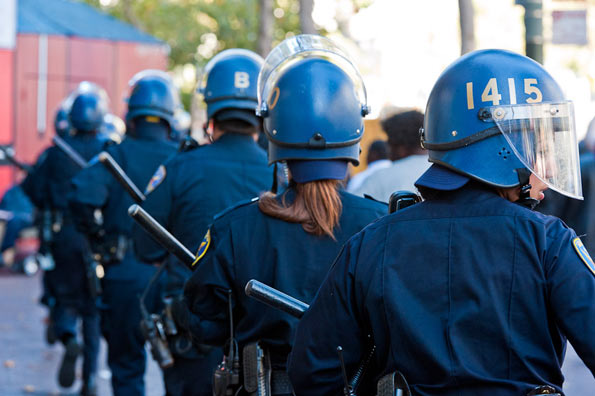Anonymous Attacks

By Brian Rinker
The Guardsman
Last month downtown BART stations were rallying points for weekly protests in response to the killing of Charles Hill by a BART Police officer, which escalated after BART officials canceled cell phone service to certain underground stations thwarting would-be protesters’ plans to disrupt BART service.
On the night of July 4 Charles Hill, 45, was reported to BART dispatch as a drunken white man, wobbling around the Civic Center BART station carrying an open container of alcohol. When two BART police officers responded, they said Hill was holding a knife and a broken bottle. In a partial video of the incident released by BART police, two officers stepped out of a train and onto the platform. One officer walks out of frame. Hill is never seen in the footage. The officer visible was identified by the Bay City Citizen as James A. Crowell. He stands there putting on black gloves and after a 25 second confrontation he steps back, pulls his gun and fires three shots. The video ends, and the rest is unclear. Hill was shot in the chest and died at San Francisco General Hospital. BART police said Hill was threatening the officers with a knife and threw a bottle at them.
Hill was a known transient. He struggled with alcohol and mental health issues.
“Charles Hill was homeless,” Dr. Rupa Marya said during a recent protest on Aug. 29. “I’d seen him several times on the streets and at the hospital.”
Marya is a local doctor interning at UCSF and said Hill was a former patient. Society has blind spots, she said, that allow people like Hill to fall through the cracks. At the protest Marya demanded that BART police be held accountable and to ask BART to disband their police force and retrain them.
The protests began on Aug. 11 on the BART platforms in the Civic Center station. Panicking, BART officials canceled cell phone service, effectively ending the protest. Free speech activist were enraged. The infamous Internet group known for their “hacktivism,” Anonymous, got involved and collaborating with No Justice No Bart began having weekly protest on Mondays during rush hour.
BART spokesman Linton Johnson in a press conference repeatedly said he loved free speech and wanted the protesters’ message to be heard. He went on to say though that free speech isn’t allowed in BART stations beyond the fare gates. Johnson cited a 1969 Supreme Court ruling that in effect made free speech illegal in narrow circumstances involving public safety.
The protests have had mixed public reactions with the largest complaints coming from BART riders trying to commute during the protests. Riders have complained about closed stations, late trains and finding alternative transportation.
In recent protests, police officers and members of the media have far outnumbered the protesters, raising concerns to its legitimacy.
However, BART police have killed under suspicious circumstances and people want an answer.
Jean Pauline, 89, and her husband, Tom Brown, 70, Oakland residents, came to the recent rally at the Civic Center to protest the BART police.
“We‘re here to protest all the killings,” said Pauline. She and Brown want the BART police to be disarmed. Pauline is an avid activist and has seen her share of protests. She attended the speeches of Martin Luther King Jr. and protested in the anti-Franco rallies of the 1930s. She has seen a lot of change over the years, but doesn’t think society is much better.
“It’s much worse today than it was during the Depression,” said Pauline.

Comments are closed.